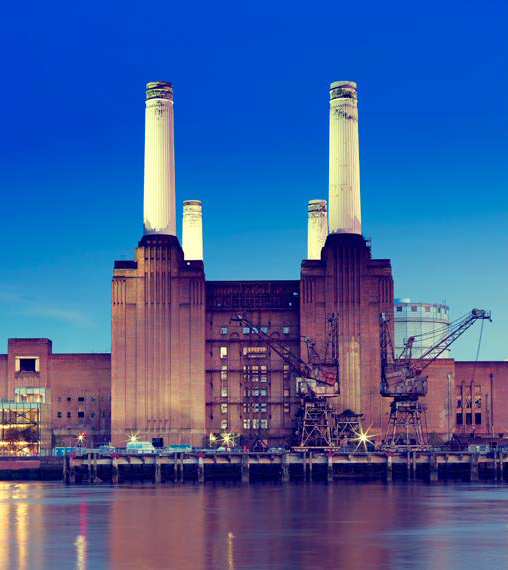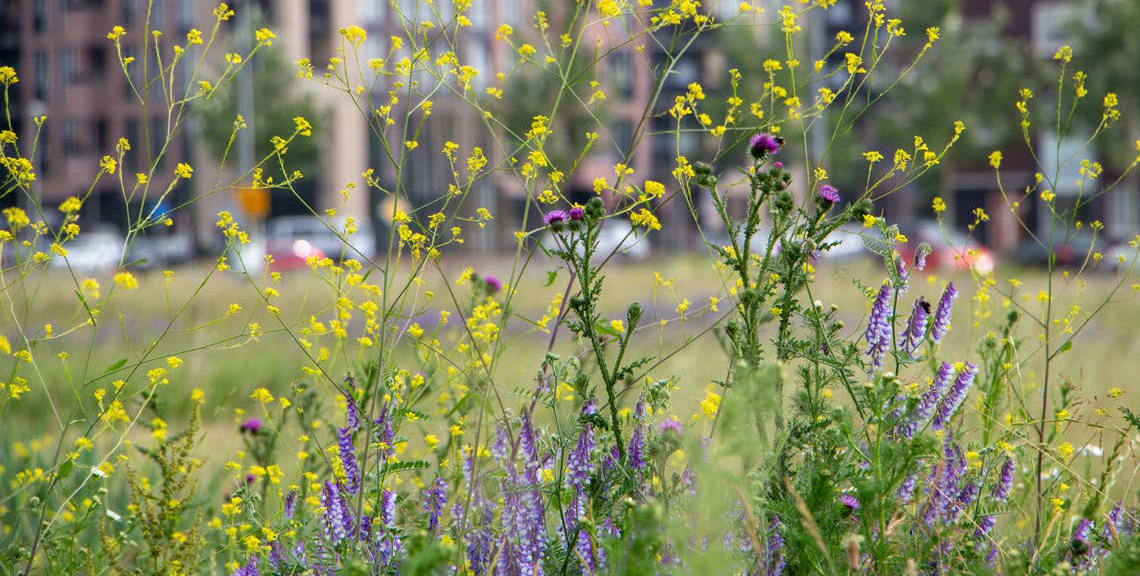WHAT ROLE DOES THE PLANNING SYSTEM PLAY IN DELIVERING MORE ENVIRONMENTALLY SUSTAINABLE RETAIL PLACES?
THINKING GREEN
Greening retail property isn’t just about reducing the emissions of buildings and energy usage; it is also about rethinking the urban infrastructure with more diverse uses, better transport systems, densification and biodiverse spaces at its core. The planning system has an important role in delivering a ‘green future’ and it is doing a lot to assist in ensuring that future. Planning is the first stop in terms of development delivery and has a central policy objective to deliver development that is sustainable.
Delivering a green future through the planning system therefore means acting on a number of existing, well-established policy objectives and those that are emerging, including densification of urban areas, delivering development on previously developed (‘brownfield’) land, enhancing biodiversity, supporting development that is accessible and can utilise more sustainable patterns of travel, and securing a pathway towards carbon reduction and ‘net zero’.
As the planning system is concerned with regulating ‘development’ it isn’t set up to deal with retrofitting existing buildings, where works that don’t constitute development for the purposes of the Planning Acts aren’t proposed, to enhance their green credentials. However, over the last two years, measures have been taken to simplify the use of existing buildings for alternative purposes through new planning legislation, which do have a positive effect in terms of supporting the delivery of a green future.
Can repurposing retail and town centre property and sites support these policy objectives to deliver a green future?
REPURPOSING THE USE CLASS SYSTEM
The Government took a significant step forward in 2020 to support the reuse and reimagining of all retail and leisure floorspace with the introduction of a new Use Class Order in England that provided a radical shift towards flexibility and supports the repurposing of existing buildings. The legislation revoked well established Use Classes (A1-A5, B1, D1 and D2) and created a new Use Class E covering all ‘Commercial, Business and Service’ uses. Two years of challenges to the new system, in part from concerns on the implications of the new legislation on climate change, have been thwarted and Use Class E remains in place.
The key consequence is that changes between operations within the same Use Class is not ‘development’ and therefore does not require planning permission.
This is a substantial boost to delivering a green future for retail and leisure property as the removal of a previous barrier supports the reuse of existing buildings – rather than the creation of new ones. A large number of the buildings where this reuse for alternative uses can take place are typically located in city and town centres in close proximity to existing places of work and residential areas, along with being near to sustainable transport networks. This further enhances the positive effects that the new Use Classes Order has on supporting a green future for repurposed retail and leisure property and we are seeing increasing initiatives to repurpose former retail buildings in sustainable locations for new leisure, office, life science and medical uses.
DENSIFICATION AND BROWNFIELD SITES
It’s not just the reuse of existing buildings that planning can support to deliver a green future; the overall ethos of land-use planning supports minimising the use of natural resources. With that in mind, the planning system strongly supports development on brownfield sites, including vacant land and existing buildings. Such development is considered an efficient use of land that minimises impacts on the environment, with sites typically located within town centres and well-located urban areas. Space that is currently retail will certainly present opportunities for redevelopment going forwards and is already doing so.
Brownfield sites and the repurposing of existing buildings in towns and cities therefore present an excellent opportunity to assist in helping the UK reduce its environmental impact and carbon emissions. Developing brownfield sites supports reducing the requirement for development delivery on greenfield sites minimising environmental impact.
Due to their locations surrounded by existing infrastructure, brownfield sites present the opportunity to encourage and deliver sustainable patterns of travel to homes, employment, amenities and services. In particular, the delivery of development presents the opportunity to reduce carbon emissions through private car travel and create sustainable linked travel patterns across multiple uses (e.g. services and amenities) within urban areas.
Furthermore, city and town centres are places that can accommodate greater scale in order to support reducing transport and domestic emissions. Increasing density further can support that reduction in carbon emissions; Centre for Cities have shown how increasing densification in city and town centre can help in terms of achieving net zero1.
The planning system has a strong and well-established role to supporting brownfield development and densification. Planning policies have long held a strategic objective to support the delivery of development on brownfield land and to make as efficient use as possible of that land, given the environmental benefits that arise from development delivery on brownfield sites. National policy confirms that substantial weight should be applied to the value of using suitable brownfield land within settlements for homes and other identified needs. Decisions should promote and support the development of under-utilised land and buildings, particularly if this would help to meet identified needs for
housing where land supply is constrained, and available sites could be used more effectively. In order to support densification in city and town centres, national policy also requires local plans to include minimum density standards for development in those locations.

Government has sought to support the above policy initiatives by bringing in new legislation through new permitted development rights that support the development of an additional two floors for residential purposes above existing retail and other forms of commercial property (including restaurant and office uses) in certain circumstances. After a period of bedding-in, we are now beginning to see this legislation being used. Its effect is that it supports densification and the use of brownfield sites which can all support meeting needs whilst minimising the impact of new housing delivery on the environment. This point has been echoed by a recent study by the University of Sheffield which confirms that vertical extensions could help to provide the housing needed in England’s 20 biggest cities whilst also supporting high streets and city centre businesses, but importantly they would ‘help to create low-carbon, mixed-use cities where people live close to the services and amenities they rely on’.
ENHANCING BIODIVERSITY
A central part of the Government’s initiatives to delivering a green future through development is Biodiversity Net Gain (‘BNG’).
BNG is an objective to improve biodiversity from its current state. BNG is embedded within the Government’s Environment Bill which received Royal Assent on 9 November 2021 and will likely form part of formal legislation under the Planning Acts by 2023. At this point, BNG will become a mandatory requirement which will require a minimum 10% net gain with any new habitats created secured for at least 30 years. Habitat improvements will be able to be delivered on or off site, with the preference being on site in the first instance or via a commuted sum where that is not possible.
It will apply to development on brownfield as well as greenfield land. Even though it is not yet legislation, national policy requires the consideration of BNG, and a considerable number of local policies are now in place requiring the same. It follows that the requirement for BNG will apply to planning applications for the repurposing of existing buildings.
There are easy and tangible ways in which town centre development, and the repurposing of retail space through the planning system, can deliver BNG. Often such sites are starting from a low or non-existent biodiversity base. Opportunities exist from green and brown roofs on developments, to building techniques that cater for incorporating nesting provision for birds, bats and insects, to enhanced green infrastructure including tree planting, green walls and enhanced and biodiversity-friendly landscaping. Where planning applications for repurposing of buildings have been required – for example, to create additional floors for alternative uses including office and student accommodation, we are beginning to see landlords and developers incorporate opportunities such as the above into their new developments. Soon this will be a mandatory requirement of most proposals that require a planning application.





